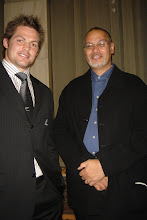 Their small cabal of investors were envious of the Maori farms which supplied Auckland and the Australian colonies with produce. They saw great potential if this land could be acquired cheaply (Confiscation is about as cheap as you can get) and then sold at a profit to the ever growing number of settlers arriving in the colony. Maori farms remained communally owned and the Waikato was the seat of the Kingite ‘Land League’ which stubbornly refused to become alienated from any more of its land.
Their small cabal of investors were envious of the Maori farms which supplied Auckland and the Australian colonies with produce. They saw great potential if this land could be acquired cheaply (Confiscation is about as cheap as you can get) and then sold at a profit to the ever growing number of settlers arriving in the colony. Maori farms remained communally owned and the Waikato was the seat of the Kingite ‘Land League’ which stubbornly refused to become alienated from any more of its land.The Settler Government acquired the £3m loan which paid for the arrival of the ‘Fencibles’, militia who would be paid for their service to the Government with grants of land in the confiscated areas, fulfilling two goals. This force meant the Settler government could show that they were playing their part in the war as well as providing a long term force capable of mobilisation at a moments notice (The NZ version of the Minute men?)
The invasion itself went slowly. General Cameron was a professional soldier who had a distinguished career, he was expected to crush the Kingites in short order. The Great South Road made it easy for him to shift men and supplies to the Waikato but not into it. Progress was slow and made even slower by Maori attacks on the fringes of Auckland. This necessitated leaving soldiers behind to protect both Auckland and the supply lines. It took three months to reach Meremere.
 In some respects Maori tactics had been to successful. A force of 1500 warriors had erected the Meremere line and waited patiently for the British to arrive. But 3 months was to long and many had been forced to return home, leaving a force to small to defend the fortifications. After a brief fire-fight, which included Maori use of artillery, the defenders melted back into the forest and Cameron marched on.
In some respects Maori tactics had been to successful. A force of 1500 warriors had erected the Meremere line and waited patiently for the British to arrive. But 3 months was to long and many had been forced to return home, leaving a force to small to defend the fortifications. After a brief fire-fight, which included Maori use of artillery, the defenders melted back into the forest and Cameron marched on.To Rangiriri, which was again a massive set of fortifications (amongst the worlds largest according to Belich) which ran between the river and a Lake forcing the British to attack head on. Because they controlled the river they were able to land troops behind the line and attack from both sides. Despite this advantage the Maori held out, repulsing several attacks at least one of which reached the central redoubt before being pushed back.
The next morning under what the Maori claimed was a flag of truce, the British captured 180 Maori, the rump of the army that had initially been prepared to fight them – the rest had again disappeared. Not surprisingly within 18 months almost all of these prisoners had escaped.
Cameron marched on.He captured the empty Ngaruawahia, capital of the King. He then reached a third line of fortifications. This was the Paterangi line, even bigger than those at Rangiriri. Intelligence said this was defended by a far larger force than at the previous battle. If a few defenders could hold him back there what could a larger force in better prepared positions do? Cameron decided to repeat his tactics, and bypassed the line by landing at Rangiaowhia, a village the Maori believed to be neutral. Many old people and children were killed when the whare caught alight during the fighting here. It is here that John Bryce won his medal for bravery (we’ll talk about this later) Afterwards when Cameron advanced on Paterangi he again found it abandoned. The King and most of his followers had again vanished travelling south into the fastness of the Maniapoto





No comments:
Post a Comment